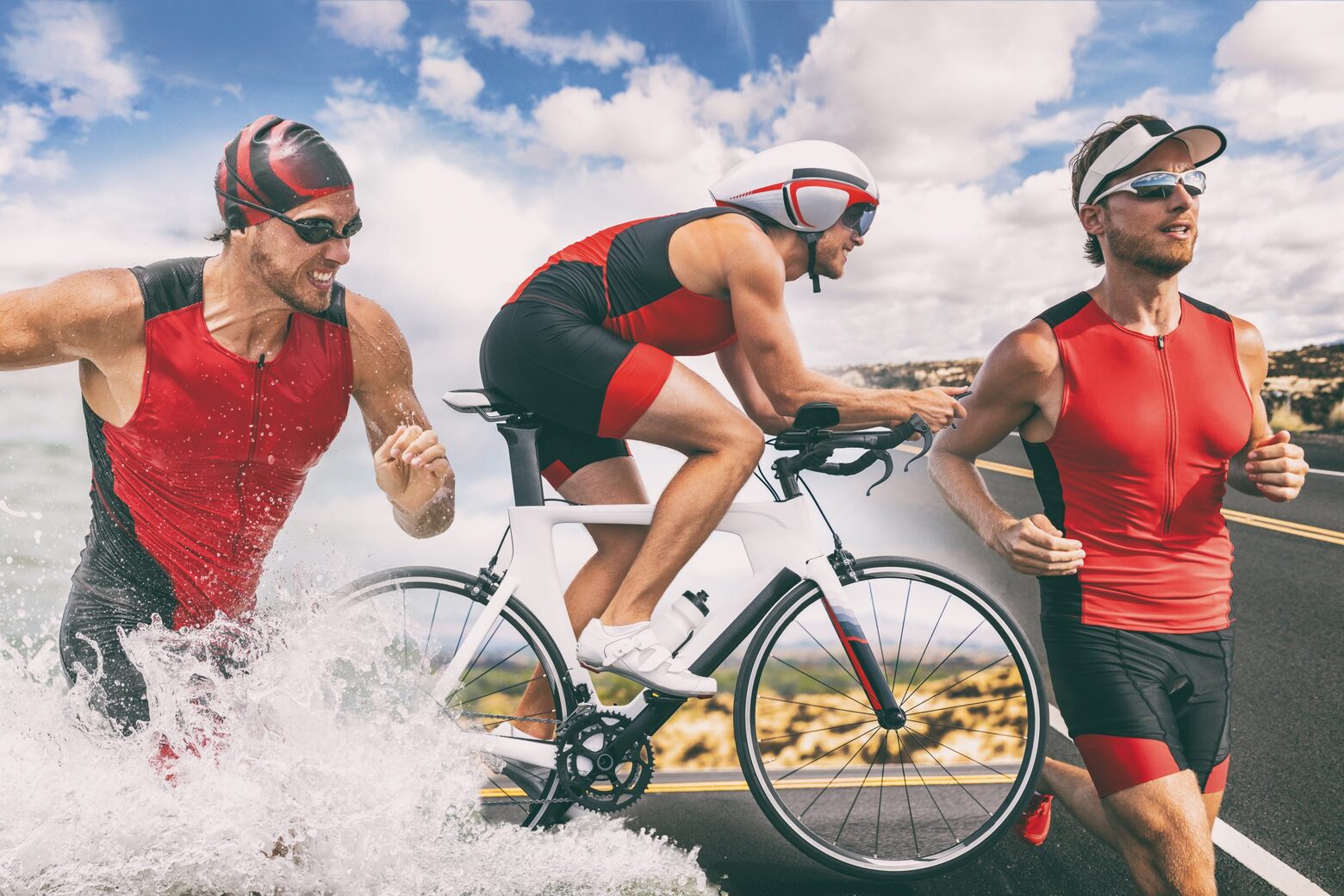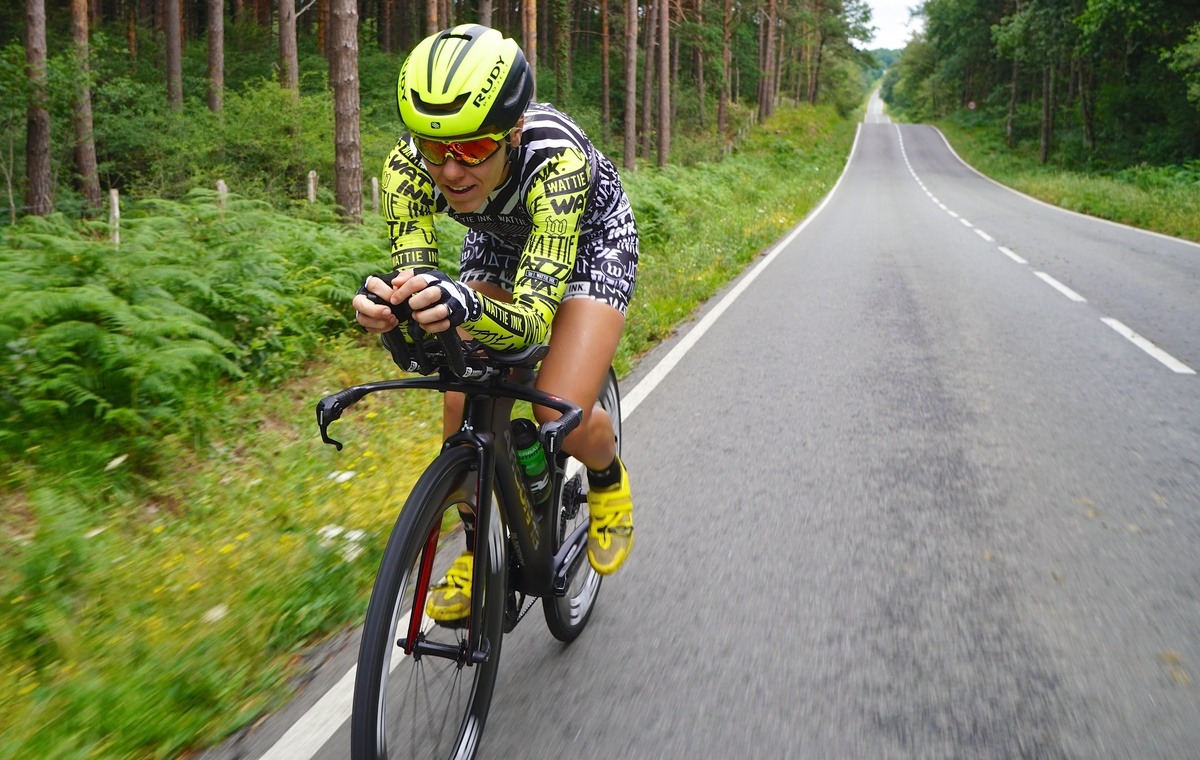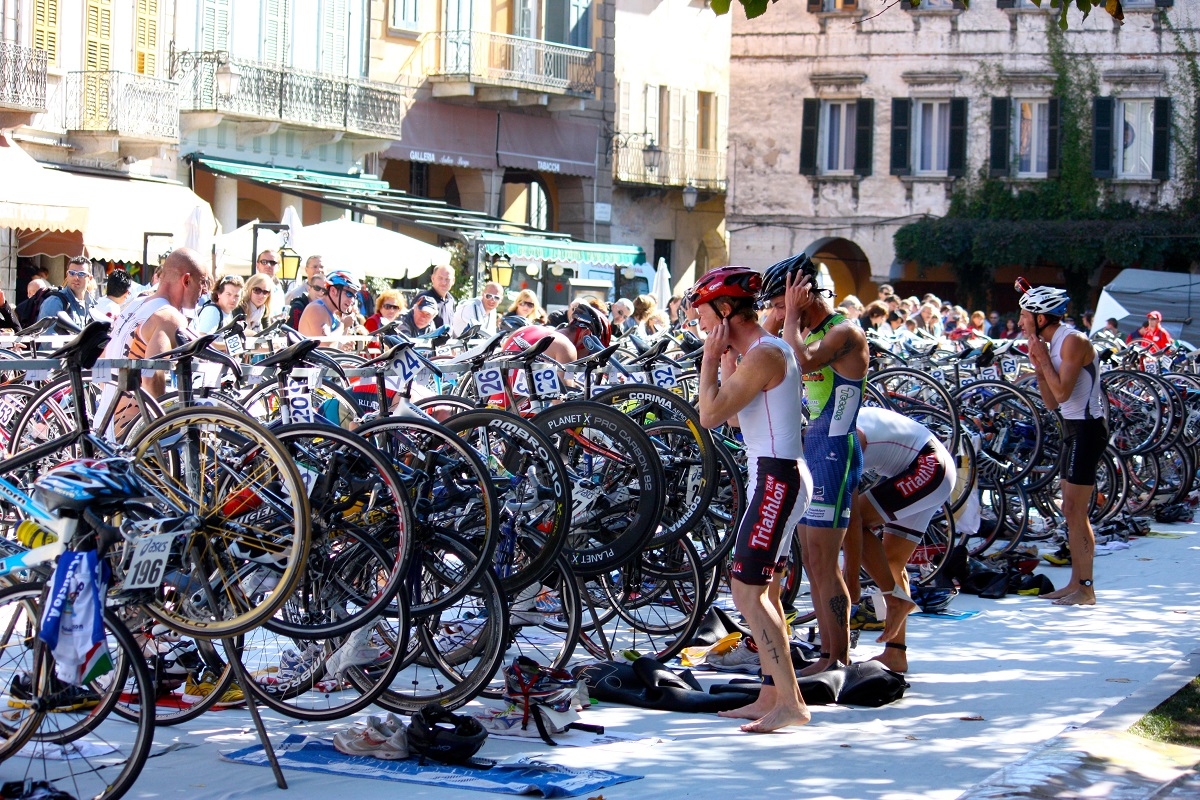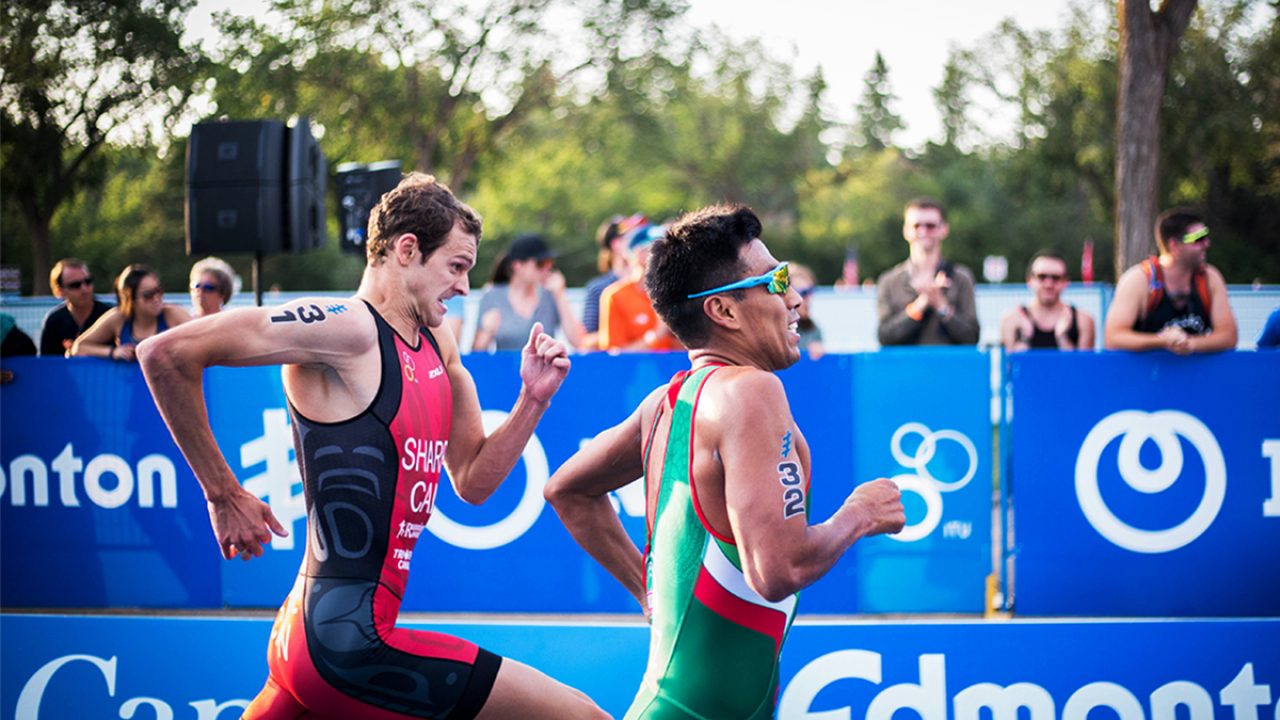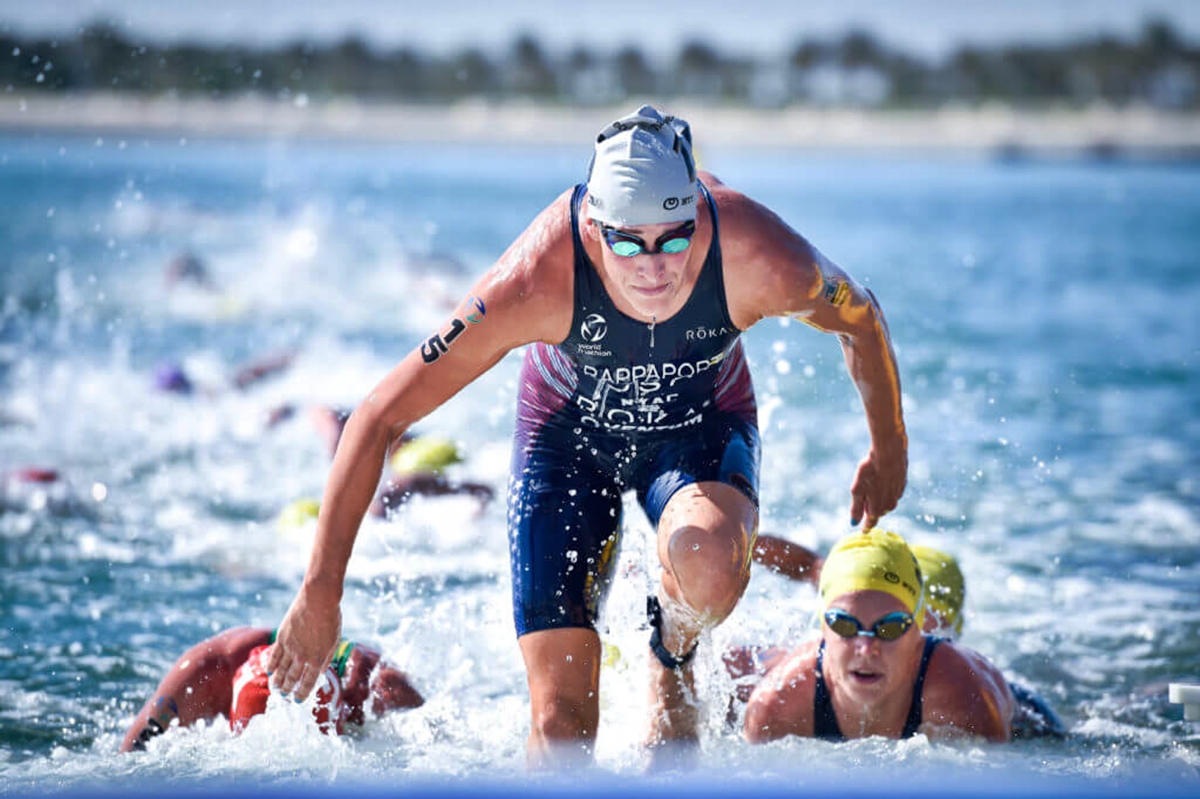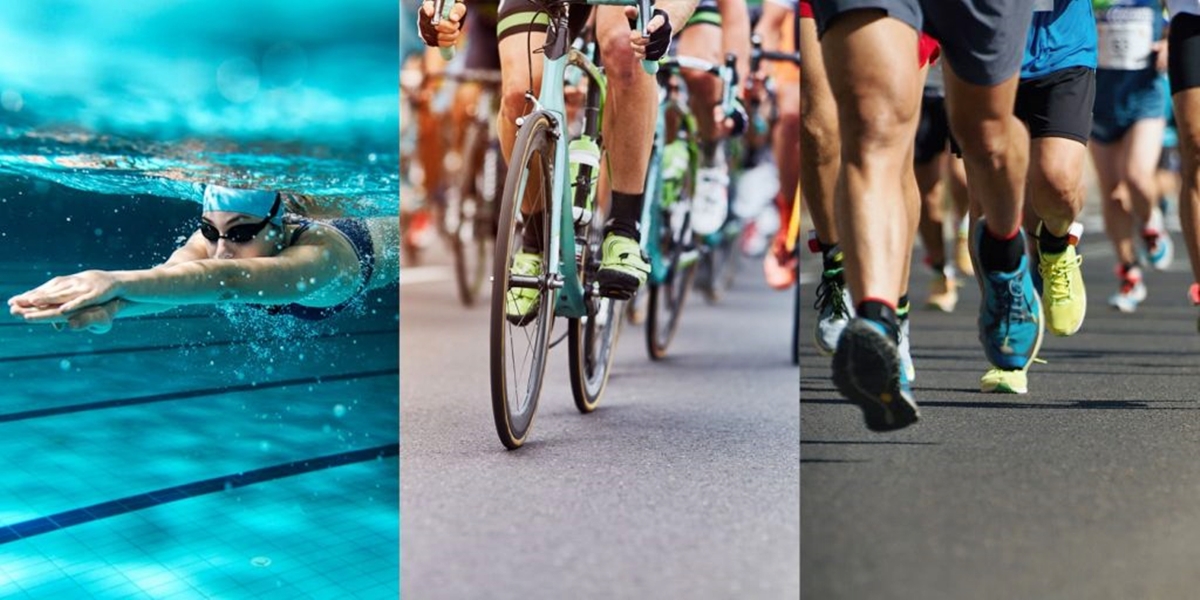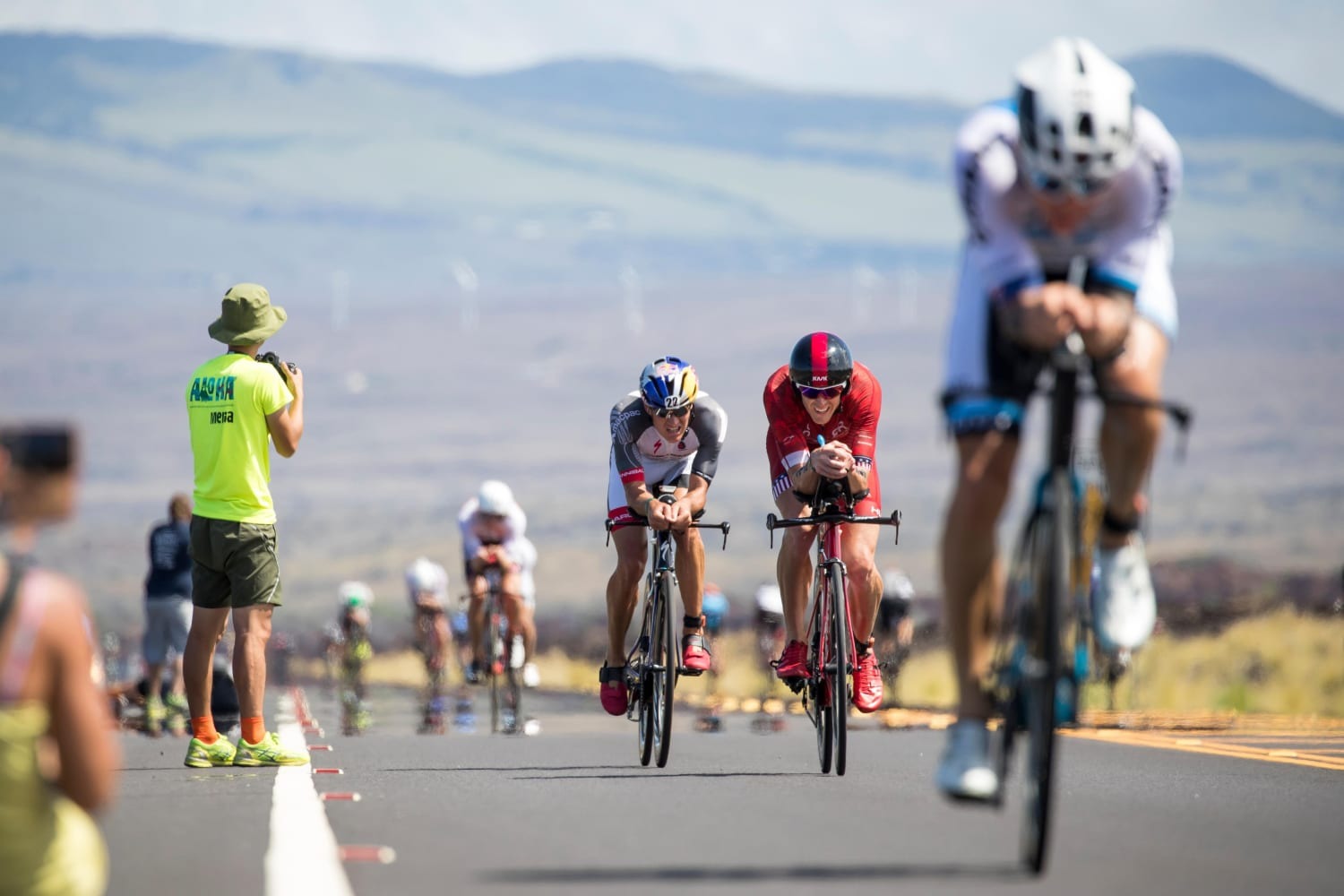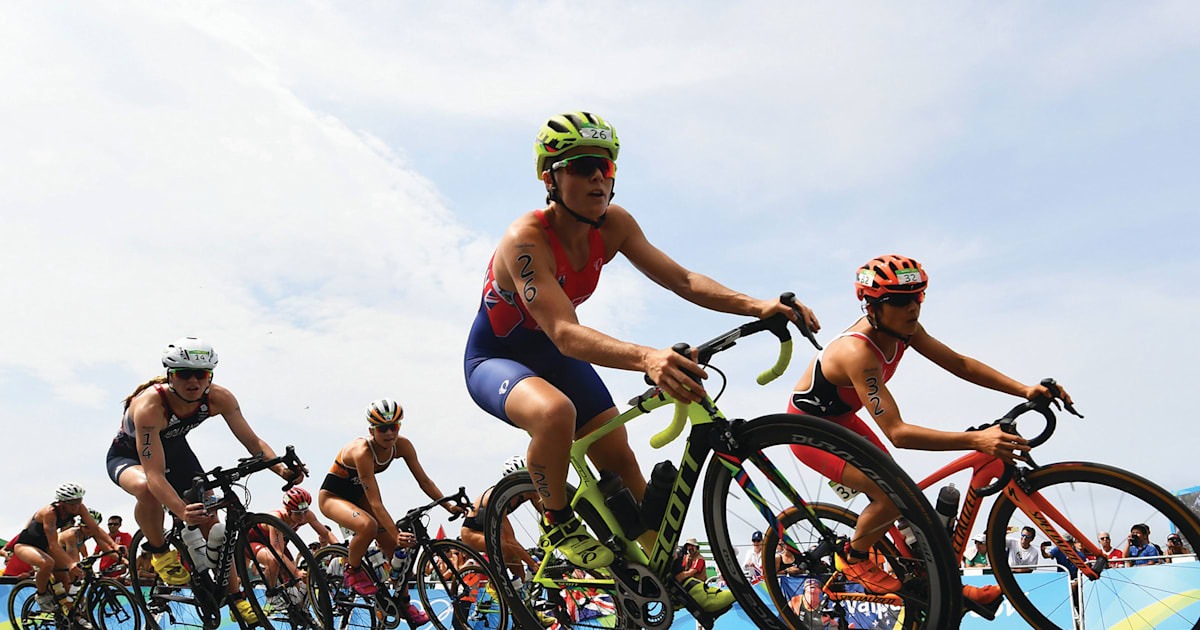Home>Misc>Featured>Physiological View And Details Of What The Body Endures During The Ironman Triathlon.


Featured
Physiological View And Details Of What The Body Endures During The Ironman Triathlon.
Modified: August 21, 2023
Discover the physiological challenges faced by athletes during the Ironman Triathlon. Dive into the featured details of the body's endurance in this ultimate test of strength and stamina.
Introduction
The Ironman Triathlon is one of the most grueling endurance events in the world. Consisting of a 2.4-mile swim, a 112-mile bike ride, and a full marathon run of 26.2 miles, it pushes athletes to their physical and mental limits. This ultimate test of strength and stamina requires months of rigorous training and preparation.
The human body undergoes tremendous challenges during the Ironman Triathlon. From the initial plunge into the water to the final steps across the finish line, athletes must overcome fatigue, dehydration, muscle cramps, and mental exhaustion. Understanding the physiological demands of the Ironman Triathlon provides insights into the incredible resilience of the human body.
In this article, we will explore in detail the physiological view of what the body endures during the Ironman Triathlon. From the swim leg to the bike leg and finally to the run leg, we will delve into the specific challenges faced by athletes throughout the race. By examining the body’s response to intense physical exertion, we can gain a deeper appreciation for the remarkable capabilities of the human body.
Whether you are a seasoned triathlete or simply curious about the physical demands of this iconic race, join us on this journey to uncover the intricate workings of the body during the Ironman Triathlon. Strap on your virtual training gear and get ready to dive into the world of endurance sports!
Overview of the Ironman Triathlon
The Ironman Triathlon is a long-distance endurance race consisting of three disciplines: swimming, cycling, and running. It was first conceived in 1978 as a combination of existing endurance events, and has since gained worldwide recognition as the ultimate test of physical and mental endurance. Athletes from all walks of life participate in this iconic race, pushing their limits to achieve the title of “Ironman”.
The race begins with the swim leg, where participants tackle a 2.4-mile open water swim. They then transition to the bike leg, which consists of a grueling 112-mile ride through varied terrain. Finally, athletes embark on the run leg, completing a full marathon of 26.2 miles to cross the finish line.
The Ironman Triathlon is not for the faint of heart. It demands months of meticulous training, discipline, and determination. Athletes need to possess a combination of strength, endurance, and mental fortitude to complete the race within the allotted time. The physical and psychological challenges faced during the Ironman Triathlon make it one of the most revered endurance events in the world.
Participants come from diverse backgrounds, including professional athletes, seasoned triathletes, and individuals looking to push their boundaries and accomplish a personal goal. Each athlete has their own motivation and reason for taking on this monumental challenge.
One of the unique aspects of the Ironman Triathlon is its inclusivity. The race welcomes individuals of all age groups, with different categories and divisions to accommodate various skill levels. This inclusivity fosters a sense of camaraderie among participants, as they support and encourage each other throughout their journeys.
From its humble beginnings to its current global presence, the Ironman Triathlon has captured the imagination of athletes around the world. It symbolizes the triumph of the human spirit, pushing beyond limits and achieving what was once thought impossible. As we delve deeper into the physiological demands of each leg of the race, we will gain a better understanding of the incredible physical feats accomplished by Ironman participants.
Preparing for the Ironman Triathlon
Preparing for the Ironman Triathlon requires months of dedicated training and preparation. Athletes must develop a comprehensive training plan that encompasses all three disciplines: swimming, cycling, and running. The goal is to build endurance, improve strength, and enhance overall fitness to withstand the grueling demands of the race.
Training for the Ironman Triathlon involves a combination of structured workouts and long-distance sessions. Athletes typically follow a periodized training plan, gradually increasing the intensity and duration of their workouts over time. This progressive approach helps the body adapt to the stress of the race while minimizing the risk of overuse injuries.
Swimming practice is crucial to develop the technique and endurance required for the swim leg. Athletes focus on building their confidence in open water, practicing bilateral breathing, and refining their stroke mechanics. Regular pool sessions and open water swims help prepare them for the challenges of the race day.
The bike leg demands both cardiovascular fitness and muscular endurance. Athletes spend countless hours on the saddle, gradually increasing their mileage and tackling hilly terrain to simulate race conditions. They also focus on improving their pedaling efficiency and maintaining a steady cadence to optimize their performance.
Running forms the final leg of the Ironman Triathlon, and athletes must be prepared to run a full marathon after swimming and cycling. Training includes a combination of long-distance runs, speed work, and hill training. Developing mental resilience to push through fatigue and maintain a steady pace is key to success during the run leg.
In addition to the physical demands, nutrition and hydration play a crucial role in an athlete’s preparation for the Ironman Triathlon. A balanced diet rich in carbohydrates, proteins, and healthy fats is essential for providing the fuel needed for long training sessions. Athletes also focus on proper hydration and electrolyte balance to prevent dehydration and cramping during the race.
Mental preparation is equally important for the Ironman Triathlon. Athletes must develop mental toughness and resilience to overcome the challenges they will face during the race. Visualizations, positive affirmations, and mental rehearsal techniques help athletes stay focused and motivated on race day.
Overall, preparing for the Ironman Triathlon requires a holistic approach that addresses physical fitness, nutrition, hydration, and mental strength. It is a journey that tests both the body and the mind, but with proper training and preparation, athletes can conquer this ultimate endurance challenge.
Swim Leg of the Ironman Triathlon
The swim leg is the first segment of the Ironman Triathlon, where athletes take on a challenging 2.4-mile open water swim. This leg sets the tone for the entire race and requires a combination of physical endurance, mental focus, and swimming technique.
Swimming in open water presents unique challenges compared to pool swimming. Athletes must contend with ever-changing conditions, including waves, currents, and water temperature. It is essential to acclimate to open water prior to the race, practicing in similar conditions to build confidence and adaptability.
The start of the swim leg can be intense, with hundreds or even thousands of athletes jostling for position. This can lead to chaotic moments where athletes must navigate through a sea of swimmers while maintaining their stroke and staying on course. Experienced triathletes often opt for a strategic positioning at the start to find clear water and avoid congestion.
During the swim leg, athletes aim to find a comfortable rhythm and maintain a steady pace. Bilateral breathing, where athletes alternate breathing on both sides, is commonly practiced to enhance stroke efficiency and maintain balance in the water. Conserving energy is crucial, as the swim is just the beginning of a long and demanding race.
Proper sighting is vital during the swim leg to stay on course and avoid swimming unnecessary distance. Athletes must frequently raise their heads to sight landmarks or buoys to ensure they are swimming in the right direction. This requires a combination of spatial awareness, coordination, and efficient stroke technique.
As the swim leg progresses, athletes may encounter fatigue and muscle cramps due to the sustained effort. Mental resilience plays a key role in pushing through these challenges. Positive self-talk and focusing on the end goal help athletes stay motivated and maintain a strong swim pace.
At the end of the swim leg, athletes approach the transition area known as “T1,” where they will transition from swimming to cycling. Here, they quickly change out of their wetsuits, put on their cycling gear, and mentally shift their focus to the next leg of the race.
The swim leg of the Ironman Triathlon is a fierce test of endurance, technique, and mental fortitude. Athletes must navigate through open water, adapt to changing conditions, and swim efficiently to conserve energy for the bike and run legs that lie ahead.
By understanding the challenges faced during the swim leg, we gain a deeper appreciation for the physical and mental determination required to complete an Ironman Triathlon. Stay tuned as we explore the physiological demands athletes endure during the bike leg!
Physiological Demands During the Swim Leg
The swim leg of the Ironman Triathlon places significant physiological demands on athletes’ bodies. From the moment they dive into the water until they reach the transition area, their bodies endure various challenges that require both physical and mental resilience.
Firstly, the swim leg requires cardiovascular endurance as athletes engage in continuous movement for the duration of the swim. The heart has to pump oxygenated blood to the working muscles, ensuring they receive the necessary oxygen to maintain their performance. This sustained aerobic effort helps develop athletes’ cardiovascular fitness and strengthens their heart and lungs.
Swimming engages numerous muscle groups, providing a full-body workout. The repetitive motion of the freestyle stroke activates the muscles of the arms, shoulders, chest, back, and core. These muscles work together to propel the body through the water. The swim leg builds muscular endurance and strength in these specific muscle groups.
During the swim, athletes also face physical challenges such as water resistance and buoyancy. Overcoming these challenges requires muscular power, particularly in the upper body. Continuous propulsive movements against water resistance help develop muscular strength, while simultaneously maintaining efficient swimming technique.
The swim leg also places demands on the respiratory system. Athletes need to regulate their breathing patterns and utilize efficient breathing techniques to sustain their swimming pace. While swimming, individuals must coordinate their breathing with their stroke, inhaling and exhaling efficiently to maintain oxygen levels and avoid breathlessness.
The open water aspect of the swim leg adds an additional physiological challenge. The temperature of the water can impact athletes’ bodies, affecting their thermal regulation. In colder water, the body must work harder to maintain its core temperature, expending more energy and potentially increasing fatigue. Adequate acclimatization to open water conditions during training helps athletes adapt and better manage these challenges.
Mental endurance is a vital aspect of completing the swim leg successfully. Overcoming feelings of anxiety or panic, maintaining focus, and managing the mental stress associated with swimming in open water are crucial. Mental fortitude enables athletes to push through the physical and psychological barriers they may encounter during the swim leg.
In summary, the swim leg of the Ironman Triathlon demands physical and mental strength from athletes. Cardiovascular endurance, muscular strength and endurance, efficient breathing, thermal regulation, and mental resilience are all essential factors in conquering this leg of the race. By understanding and training for these physiological demands, athletes can better prepare themselves to tackle the challenges that lie ahead in the remaining bike and run legs.
Transition from Swim to Bike Leg
The transition from the swim leg to the bike leg, also known as T1, is a critical phase in the Ironman Triathlon. It requires athletes to swiftly change their gear, mentally shift focus, and prepare themselves for the next leg of the race.
As athletes exit the water and approach T1, their bodies undergo a transition from a horizontal swim position to an upright cycling posture. This change puts different demands on the muscles and cardiovascular system. Athletes must quickly adapt to the new position, allowing their body to adjust to the shift in workload and muscle engagement.
Efficient and timely transitions are crucial to minimize time lost during the race. Athletes strive to streamline the process by practicing transition setups and rehearsing their movements. This includes strategically placing their gear, such as helmets, shoes, and nutrition, in a way that allows for quick and seamless transitions.
During T1, athletes remove their wetsuits, put on their cycling shoes, helmet, and any necessary equipment, all while ensuring proper hydration and nutrition. This requires focus, coordination, and the ability to multitask. Experience and practice play a significant role in minimizing transition times and maintaining race momentum.
Mentally, the transition from swim to bike leg requires a shift in mindset. Athletes must mentally switch gears from the intensity and exertion of the swim to the sustained effort and strategy of the bike leg. They need to mentally prepare themselves for the challenging course ahead, visualizing their race plan, and mentally rehearsing their cycling strategy.
Nutrition and hydration are vital during the transition. Athletes should take the opportunity to fuel up with a combination of carbohydrates and electrolytes to replenish energy stores and sustain their performance during the bike leg. Proper hydration is essential for maintaining optimal performance and avoiding dehydration throughout the race.
Finally, the transition from swim to bike leg involves a physical adjustment to the bike itself. Athletes need to find their rhythm on the bike, settle into their riding position, and gradually increase their cycling intensity as they move from the transition area onto the race course. This adjustment requires coordination, balance, and efficient pedaling technique.
The transition from the swim to bike leg is a pivotal moment in the Ironman Triathlon. It sets the tone for the remaining distance and serves as a transition point between the physical demands of swimming and cycling. By efficiently managing their transition, athletes can maintain their race momentum and seamlessly move into the bike leg ready to tackle the challenges that await them.
Bike Leg of the Ironman Triathlon
The bike leg of the Ironman Triathlon is a rigorous and demanding segment that puts athletes’ cycling skills, endurance, and mental stamina to the test. Covering a distance of 112 miles, this leg presents a unique set of challenges as participants navigate through varied terrain and fluctuating weather conditions.
During the bike leg, athletes rely on their cycling technique and physical conditioning to maintain a steady pace. The primary goal is to conserve energy and sustain a consistent effort throughout the ride. This requires efficient pedaling technique, optimizing gear selection, and maintaining a balanced power output.
One of the main physiological demands during the bike leg is cardiovascular endurance. Athletes need to sustain a high aerobic output for an extended period, ensuring that their heart and lungs can deliver sufficient oxygen to the working muscles. This aerobic endurance is developed through months of dedicated training, gradually increasing both duration and intensity of cycling workouts.
The bike leg also places demands on muscular endurance, particularly in the lower body. The quadriceps, hamstrings, and glutes are extensively utilized to generate power with each pedal stroke. Through consistent training, athletes build strength and endurance in these muscle groups, enabling them to maintain power output for the duration of the ride.
Endurance athletes must have a strong core to maintain stability and proper posture while cycling. A stable core allows for efficient transfer of power from the upper body to the legs, aiding balance and reducing the risk of fatigue-related injuries during the bike leg.
Nutrition and hydration play a critical role in maintaining performance during the bike leg. Athletes need to establish a nutrition plan that provides a balance of carbohydrates, proteins, and fats to sustain energy levels. Hydration is equally important, as individuals can lose significant amounts of fluid through sweating. Regular intake of fluids, electrolytes, and nutrition aids in preventing dehydration and maintaining optimal performance.
Another physiological aspect of the bike leg is the management of body temperature. As athletes cycle through various weather conditions, including intense sunlight and fluctuating temperatures, the body must regulate its core temperature to avoid overheating. Adequate ventilation, proper clothing choices, and hydration strategies are key to managing body temperature effectively.
Mental fortitude is essential during the bike leg, especially on challenging terrains or when fatigue sets in. Athletes must maintain focus, adopt positive self-talk, and utilize mental strategies to override the temptation to slow down or give up. Developing mental resilience and finding motivation from within are crucial for success.
Completing the bike leg successfully requires a combination of physical fitness, technical competency, and mental toughness. Athletes must navigate varied terrain, adapt to changing weather conditions, manage nutrition and hydration, and overcome mental hurdles. By understanding the physiological demands of the bike leg, athletes can better prepare themselves physically and mentally to triumph over this challenging segment.
Physiological Demands During the Bike Leg
The bike leg of the Ironman Triathlon places significant physiological demands on an athlete’s body. Covering a distance of 112 miles, this leg requires participants to maintain a sustained effort, while navigating varied terrain and dealing with environmental factors. Let’s explore the specific physiological demands faced during the bike leg.
Cardiovascular endurance is crucial during the bike leg. The heart and lungs must efficiently deliver oxygen-rich blood to the working muscles to sustain the effort required for a 112-mile ride. Athletes train their cardiovascular system through long-distance cycling sessions, gradually building their endurance over time.
Muscular endurance is another key component during the bike leg. Cyclists rely on their quadriceps, hamstrings, calves, and glutes to generate power with each pedal stroke. These muscles endure a continuous workload as athletes maintain their cycling pace. Through consistent training and progressively increasing the duration and intensity of their rides, athletes develop the muscular endurance necessary to sustain their effort throughout the bike leg.
Core strength plays a critical role in maintaining stability and proper posture during the bike leg. A strong core helps athletes maintain a streamlined position, which reduces drag and improves efficiency. Additionally, a stable core aids in the transfer of power from the upper body to the legs, maximizing pedaling efficiency and minimizing energy waste.
Proper nutrition and hydration are key to sustaining performance during the bike leg. Athletes need to replenish their energy stores by regularly consuming carbohydrates. This provides the fuel needed to power their muscles and maintain optimal performance. Hydration is equally important to prevent dehydration, as athletes can lose significant amounts of fluid through sweating. Regular intake of fluids and electrolytes helps maintain optimal hydration and aids in thermoregulation.
Thermoregulation is a crucial physiological aspect during the bike leg. Athletes must efficiently manage their body temperature, especially when cycling in varying weather conditions. They employ strategies such as proper clothing choices, ventilation, and cooling methods to prevent overheating and thermal stress.
Maintaining mental focus and resilience is paramount during the bike leg. Athletes must overcome physical fatigue and mental exhaustion, especially when facing challenging terrains or long stretches of road. Developing mental strategies, positive self-talk, and staying present in the moment help athletes push through these mental barriers, enhancing their overall performance.
The bike leg of the Ironman Triathlon places immense physiological demands on athletes’ bodies. Their cardiovascular and muscular endurance, core strength, nutrition, hydration, thermoregulation, and mental resilience are all tested during this segment. By understanding and training for these physiological demands, athletes can better prepare themselves to overcome challenges and maximize their performance during the bike leg.
Transition from Bike to Run Leg
The transition from the bike leg to the run leg, known as T2, is a critical moment in the Ironman Triathlon. Athletes must smoothly transition their bodies and minds from cycling to running, adjusting to the different demands and motor patterns of the run leg.
As athletes approach T2, they dismount their bikes and quickly transition to the running portion of the race. The transition area is a hive of activity as athletes remove their cycling gear, put on their running shoes, and mentally prepare themselves for the final leg of the race.
The transition from the bike to run leg involves a shift in body positioning and muscle engagement. Athletes need to adapt to the upright running posture after being in a seated or aerodynamic cycling position. This adjustment places different demands on the muscles, particularly in the lower body.
During the bike leg, the quadriceps, hamstrings, and glutes are heavily engaged. The transition to the run leg requires athletes to activate their hip flexors, calves, and stabilizing muscles to maintain the running stride. This shift in muscle engagement can lead to initial feelings of stiffness and fatigue, but they usually dissipate as the body adjusts to the demands of running.
Mental resilience is pivotal during the transition from the bike to run leg. Athletes often feel the effects of the long bike ride in their legs and may experience a temporary drop in running speed during the initial stages. It’s essential to maintain a positive mindset, focusing on proper running form and maintaining a consistent pace.
The transition area also provides an opportunity for athletes to refuel and rehydrate. As they prepare for the run, athletes can consume quick-digesting carbohydrates, electrolytes, and fluids to replenish their energy stores and maintain hydration.
It is not uncommon to experience a phenomenon called “jelly legs” during the initial stages of the run leg. This is the result of the transition between cycling and running, as the muscles adjust to the change in demand. Athletes can mitigate this sensation by gradually easing into their running pace and focusing on their form and breathing.
Transitioning from the bike to run leg may initially feel challenging, but with practice and experience, athletes can refine their transition techniques and optimize their performance. Proper pacing and conserving energy become paramount during the run leg, as athletes aim to maintain a steady pace and overcome the accumulated fatigue from previous stages of the race.
The transition from the bike to run leg is a pivotal moment in the Ironman Triathlon. Athletes must smoothly transition their bodies and minds to adapt to the different demands of running. With mental fortitude, proper nutrition, and a gradual pace adjustment, athletes can successfully transition into the final leg of the race and conquer the challenge that awaits them.
Run Leg of the Ironman Triathlon
The run leg of the Ironman Triathlon is often considered the most mentally and physically demanding portion of the race. After completing the swim and bike legs, athletes embark on a full marathon of 26.2 miles, testing their endurance, strength, and mental resilience.
During the run leg, athletes rely on their cardiovascular fitness, muscular endurance, and mental fortitude to maintain a steady pace. This segment of the race requires athletes to endure fatigue, dehydration, and the physical strain that accumulated from the previous legs.
Running a marathon after swimming and cycling places a significant physiological demand on the body. Athletes need to maintain an efficient running form while battling muscle fatigue and mental exhaustion. The cardiovascular system must continue to supply oxygen to the working muscles, ensuring endurance throughout the run leg.
Muscular endurance becomes crucial during the run leg, as athletes push through the accumulated fatigue and muscle soreness from previous stages. The quadriceps, hamstrings, calves, and core muscles play a central role in maintaining running form and providing the necessary power for each stride.
Hydration and nutrition are vital during the run leg to prevent dehydration, muscle cramps, and energy depletion. Athletes need to regularly consume fluids and replenish electrolytes to sustain performance. Proper fueling with carbohydrates helps provide the energy needed to maintain pace and ward off fatigue.
Mental fortitude becomes increasingly important as athletes navigate the run leg. The sheer distance and physical strain can be mentally draining, requiring athletes to draw upon mental strategies, focus, and determination to overcome negative thoughts and push through moments of doubt.
The atmosphere and crowd support during the run leg can be uplifting, providing athletes with a boost of energy and motivation. Participants often draw strength from the encouragement of spectators, fellow competitors, and their support teams, helping them stay mentally strong and motivated throughout the grueling miles.
Managing the pace is crucial during the run leg. Athletes must strike a balance between pushing themselves to maintain speed and avoiding burnout. Many athletes practice negative splits, gradually increasing their pace throughout the run, to capitalize on the accumulated fatigue of their competitors.
As the finish line nears, athletes often experience a surge of adrenaline and determination. The final stretch becomes a testament to their physical endurance and mental resilience, propelling them to their ultimate goal of crossing the finish line and earning the title of “Ironman”.
The run leg of the Ironman Triathlon represents the culmination of months of training and preparation. It is a true test of an athlete’s physical and mental capabilities, where they must overcome fatigue, mental hurdles, and the physical strain of the race. Crossing the finish line of the run leg marks the end of a challenging journey and the fulfillment of a remarkable accomplishment.
Physiological Demands During the Run Leg
The run leg of the Ironman Triathlon presents significant physiological demands on athletes’ bodies. After completing the swim and bike legs, athletes must rely on their cardiovascular endurance, muscular strength, and mental resilience to conquer the marathon distance of 26.2 miles.
Cardiovascular endurance is crucial during the run leg. Athletes must sustain a steady pace for an extended period, relying on their heart and lungs to deliver oxygen-rich blood to the working muscles. The cardiovascular system adapts to the continuous demand, ensuring endurance throughout the run.
Muscular endurance plays a key role in completing the run leg successfully. Athletes must rely on the strength and endurance of their leg muscles, including the quadriceps, hamstrings, calves, and core, to maintain proper running form and generate power with each stride. The continuous effort required in running a marathon demands robust muscular endurance.
Hydration and nutrition are essential during the run leg to maintain optimal performance and prevent dehydration. Athletes need to hydrate regularly, replenishing fluid losses through sweat. Adequate nutrition, including carbohydrates for energy, is crucial to sustain endurance and prevent energy depletion during the marathon distance.
Thermoregulation is particularly important during the run leg, as athletes may experience an increase in body temperature due to the continuous exertion and environmental conditions. Proper clothing choices, ventilation, and cooling strategies help manage body temperature and prevent overheating.
Mental fortitude becomes increasingly important during the run leg. Athletes must conquer mental fatigue, push through physical discomfort, and maintain focus and motivation throughout the marathon distance. Mental strategies, positive self-talk, and visualization techniques assist in maintaining a strong mental state.
Managing pace is a critical physiological demand during the run leg. Athletes must strike a balance between maintaining a challenging pace and avoiding burnout. Additionally, managing nutrition and hydration throughout the run leg is crucial to sustain energy levels and prevent fatigue.
In the later stages of the run leg, athletes may encounter muscle fatigue and potential muscle cramps. Proper training and conditioning can help mitigate these issues, ensuring that the muscles can withstand the demands of the marathon distance.
The completion of the run leg of the Ironman Triathlon relies on the endurance and resilience of an athlete’s cardiovascular system, muscular strength, mental fortitude, and proper nutrition and hydration. Meeting these physiological demands allows athletes to push through the physical and mental challenges and cross the finish line with a profound sense of accomplishment.
Summary of Physiological Challenges Faced During the Ironman Triathlon
The Ironman Triathlon presents athletes with a series of rigorous physical and mental challenges that demand extraordinary endurance, strength, and resilience. Throughout the swim, bike, and run legs, participants face a range of physiological demands that push their bodies to the limit.
In the swim leg, athletes must navigate open water swimming, combating waves, currents, and temperature fluctuations. The swim leg requires cardiovascular endurance, muscular engagement, efficient breathing techniques, and mental fortitude to maintain a steady pace while conserving energy.
Transitioning from the swim to the bike leg involves adapting to new body positioning, shifting muscle engagement, and mentally transitioning from the intensity of swimming to the sustained effort of cycling. Athletes need to swiftly change gears, refuel with proper nutrition and hydration, and mentally prepare themselves for the upcoming challenges of the bike leg.
The bike leg places demands on cardiovascular endurance, muscular strength and endurance, core stability, nutrition, hydration, thermoregulation, and mental resilience. Athletes endure long hours on the saddle, navigating varying terrains, and adjusting their pace and effort to maintain an efficient cadence and power output.
Transitioning from the bike to the run leg presents a shift in muscle engagement and posture. Athletes must adapt to the upright position of running and overcome initial stiffness and fatigue. Mental fortitude is essential as athletes manage the transition, refuel, and mentally shift gears to tackle the final leg of the race.
The run leg embodies the ultimate test of endurance, where athletes rely on cardiovascular fitness, muscular endurance, nutrition, hydration, and mental resilience to tackle the marathon distance. Athletes push through physical and mental fatigue, managing pace, and drawing inspiration from crowd support to maintain momentum towards the finish line.
The cumulative physiological demands of the Ironman Triathlon challenge athletes in multiple aspects, including cardiovascular and respiratory systems, muscular endurance, core stability, thermoregulation, mental fortitude, and nutrition and hydration management. Endurance, strength, resilience, and strategic pacing are crucial to overcome these challenges and complete the race successfully.
Participants in the Ironman Triathlon exemplify the extraordinary capacity of the human body to endure and triumph over physical and mental obstacles. By understanding and training for the physiological demands faced during each leg of the race, athletes can optimize their performance, achieve their goals, and experience the overwhelming satisfaction of crossing the finish line.
Conclusion
The Ironman Triathlon is an extraordinary event that pushes athletes to their physical and mental limits. It encompasses a grueling swim, bike, and run leg, each presenting unique physiological challenges. Throughout the race, athletes face demands on their cardiovascular endurance, muscular strength and endurance, mental fortitude, nutrition and hydration, thermoregulation, and overall resilience.
By delving into the physiological demands of each leg, we gain a deeper appreciation for the remarkable capabilities of the human body. The swim leg tests athletes’ cardiovascular fitness, muscular endurance, and mental focus as they navigate open water and maintain efficiency in their strokes. The transition from the swim to the bike leg requires adaptation and mental preparation for the change in body positioning and muscle engagement.
During the bike leg, athletes rely on cardiovascular endurance, muscular strength and endurance, core stability, nutrition, hydration, and mental resilience. They conquer varied terrains and manage the demands of long hours on the saddle. The transition from the bike to the run leg marks a shift in muscle engagement and the mental shift to running after cycling.
Finally, the run leg challenges athletes’ cardiovascular fitness, muscular endurance, nutrition, hydration, and mental fortitude for the marathon distance. They face fatigue, muscle soreness, and mental barriers, relying on sheer willpower to push through and cross the finish line.
The Ironman Triathlon showcases the astounding physical and mental capabilities of athletes and the human body’s capacity to endure. It exemplifies the importance of proper training, nutrition, hydration, and mental preparation. Athletes who conquer the Ironman Triathlon exemplify the triumph of the human spirit, setting an inspiring example for others.
So, whether you are an aspiring triathlete, a fitness enthusiast, or simply captivated by the incredible feats achieved during the Ironman Triathlon, the physiological challenges faced by athletes throughout the race are awe-inspiring. Take this knowledge and use it to appreciate the dedication and perseverance required to complete this ultimate endurance event.
As we conclude our journey through the physiological demands of the Ironman Triathlon, we celebrate the remarkable achievements of athletes and the unwavering spirit that allows them to overcome formidable challenges. The Ironman Triathlon remains an iconic testament to the extraordinary strength and resilience of the human body.

